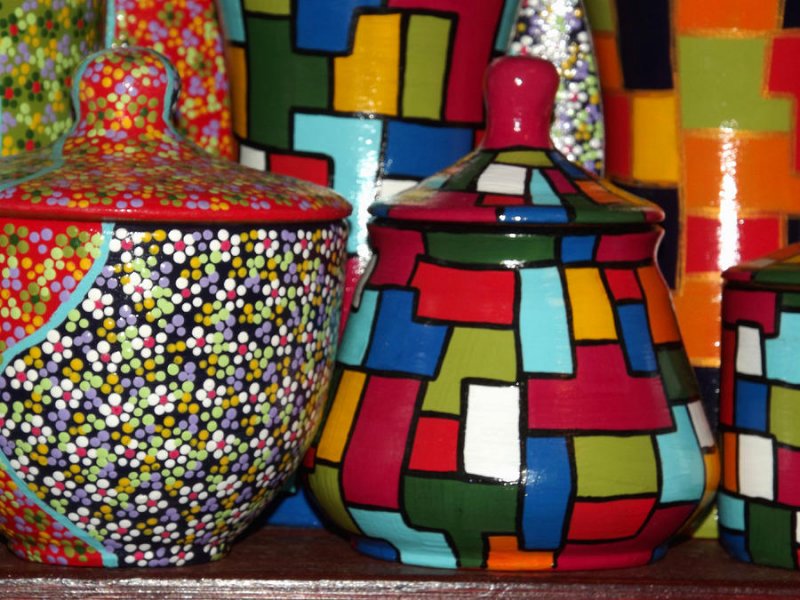Colourful Pottery Tips
Once you have expertly crafted your ceramic or pottery creation, there are ways to amplify your creation, the most simple being a fresh coat of paint. Most people use ceramic materials to paint their crafts. This includes oxide stains, underglazes, and slips. These materials fuse to the structure when added to the fire or oven. Baked on materials will not peel or flake off like ordinary paint. This is more suitable for objects that will be used for their functionality. If the object is purely decorative, ordinary paints will suffice and you can look into using acrylic paints or nail polish.
Underglaze
To achieve a watercolour painting effect, an underglaze is thin enough to do this while offering enough colour to reduce the risk of fading. A semi-moist glaze is easier to use than the liquid varieties.
If you are looking for an acrylic effect, the liquid underglaze will be your best option. You can apply a thick layer onto the object’s surface. It is recommended to be done layer by layer, letting each dry before the next application. Three layers are ideal for maximum strength.
Slips
By using a liquified clay suspension, you can create a slip that can colour the clay before you put it into the oven or fire. Slips are either white or tinted with oxides to provide the desired colour effect. For the best results, use slips on greenware. This is a great option as it is easy to clean, matches the shrinkage of the clay, and can add additional colour to underglazes.
Oxide Stains
If you want to paint lines, this is the best way to go about it. It also works well for adding bigger patches or areas of colour. You can either use a commercially prepared stain or make your own. Of course, the commercially created options are more stable and reliable, however, making your own is an experience in itself.

Glazes
Glazes can be used to paint on ceramics and have even been used in majolica traditions. The problem with this is that it tends to run when exposed to heat and can become molten. This can result in the colour or designs disappearing into the underlying glaze.
Acrylic Paint and Fingernail Polish
When you do not need to use your creation for its perceived functionality, you can opt for nail polish or acrylic paint. Of course, these options offer more room for creativity and customisation like the Blackjack tables in Dubai and should be carefully selected based on the intended use. The only downside is that it may peel or flake off with time. It can also compromise the surface – so be careful.
Experimenting with your pottery and ceramics is part of the fun, so do not be afraid to jazz them up with a splash of colour to take it to the next level.
